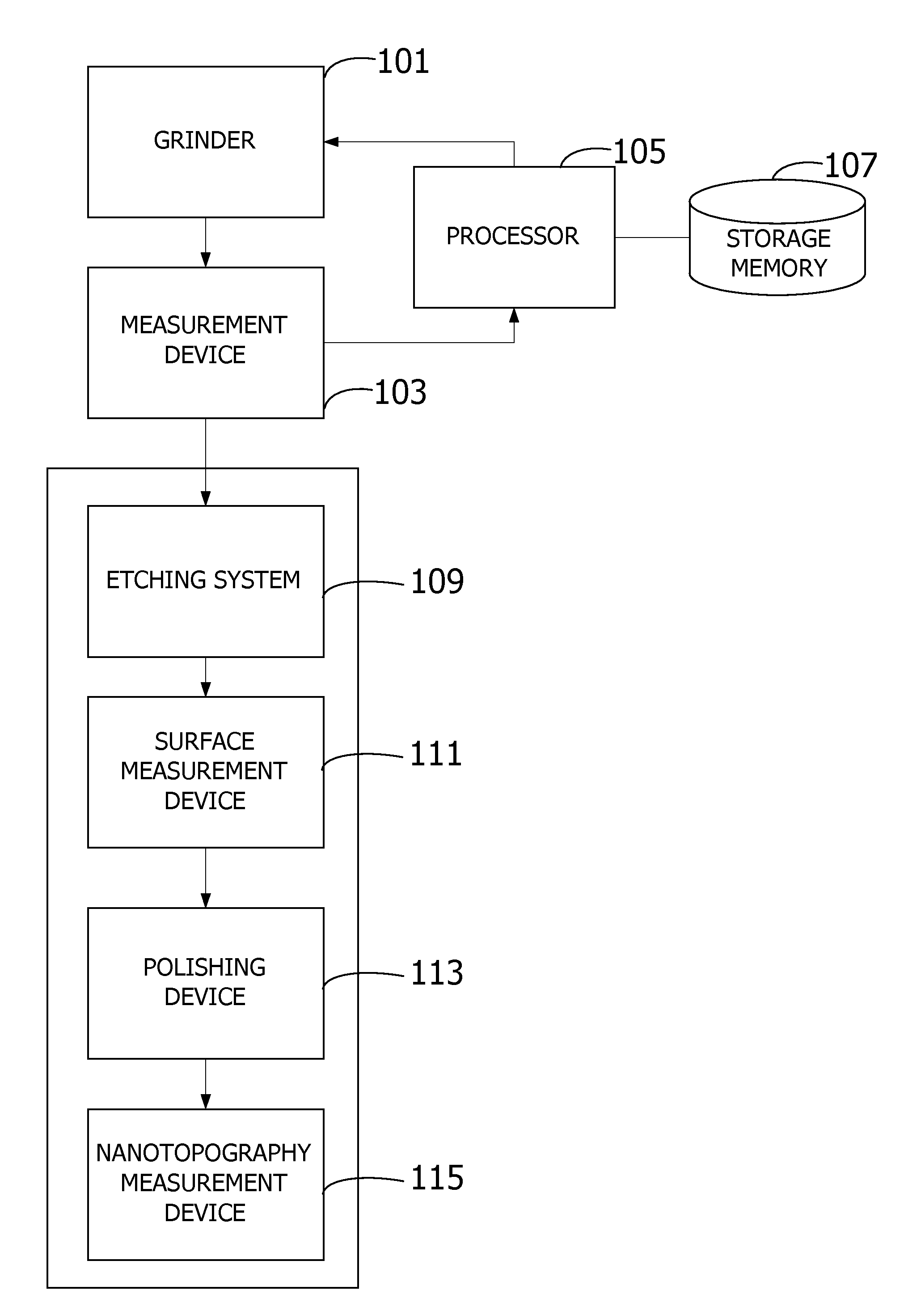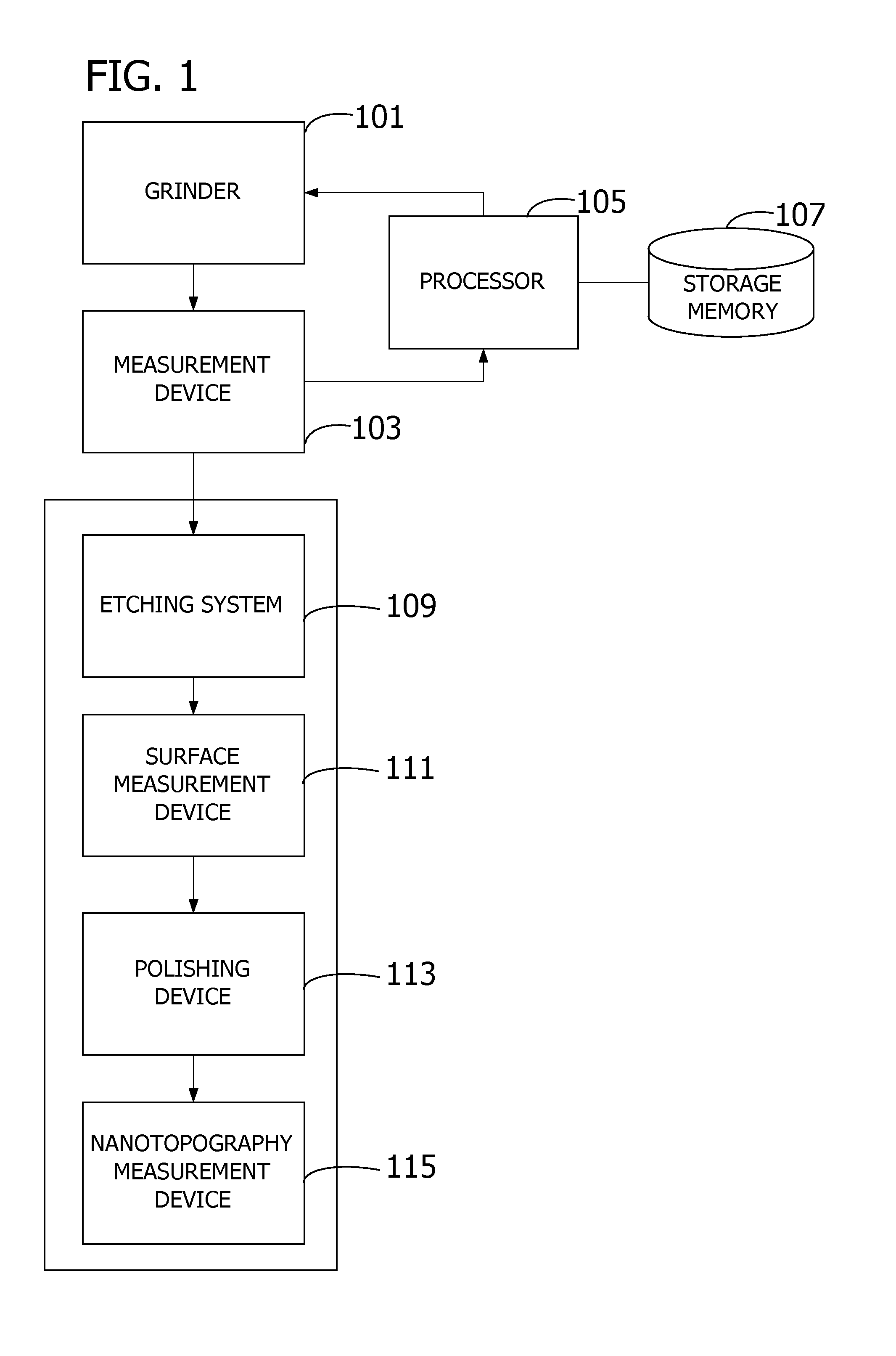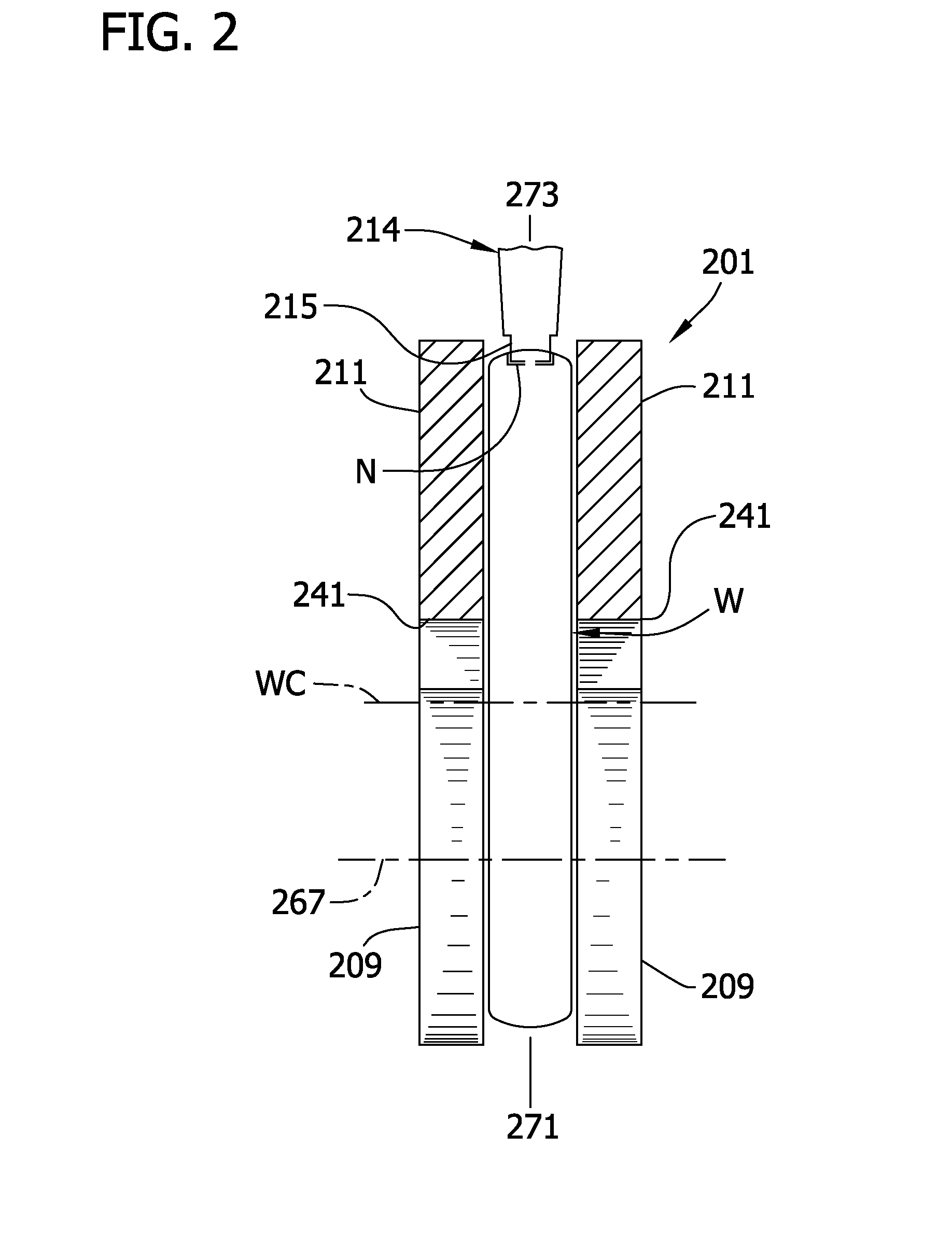Nanotopography control and optimization using feedback from warp data
a technology of warp data and nanotopography, applied in adaptive control, lapping machines, instruments, etc., can solve the problems of substantial yield loss, non-adjustment of topology degradation, and degradation of the topology of the wafer surface, so as to improve the nanotopography, less lag time, and less time
- Summary
- Abstract
- Description
- Claims
- Application Information
AI Technical Summary
Benefits of technology
Problems solved by technology
Method used
Image
Examples
Embodiment Construction
[0032]Referring now to the drawings, aspects of the invention permit nanotopography feedback in less time, allowing adjustments that can be made to improve nanotopography to be recognized and implemented with less lag time for improved quality control and / or wafer yield. In FIG. 1, a block diagram illustrates a system for processing a semiconductor wafer according to an embodiment of the present invention. For purposes of illustration and not limitation, the system includes a grinder 101, a measurement device 103, and a processor 105 having a storage memory 107 associated therewith. The grinder 101 grinds a wafer and the measurement device 103 measures data indicative of a profile of the ground wafer. The ground wafer at this point is unetched and unpolished. The processor 105 is configured to provide feedback for adjusting a grinding parameter based on the measured data. For example, one or more of the grinding wheels of grinder 101 may be moved in order to improve the nanotopograp...
PUM
| Property | Measurement | Unit |
|---|---|---|
| spatial wavelength | aaaaa | aaaaa |
| distance | aaaaa | aaaaa |
| distance | aaaaa | aaaaa |
Abstract
Description
Claims
Application Information
 Login to View More
Login to View More - R&D
- Intellectual Property
- Life Sciences
- Materials
- Tech Scout
- Unparalleled Data Quality
- Higher Quality Content
- 60% Fewer Hallucinations
Browse by: Latest US Patents, China's latest patents, Technical Efficacy Thesaurus, Application Domain, Technology Topic, Popular Technical Reports.
© 2025 PatSnap. All rights reserved.Legal|Privacy policy|Modern Slavery Act Transparency Statement|Sitemap|About US| Contact US: help@patsnap.com



